- Home
- Simon Winchester
Atlantic
Atlantic Read online
ATLANTIC
GREAT SEA BATTLES, HEROIC DISCOVERIES, TITANIC STORMS, AND
A VAST OCEAN OF A MILLION STORIES
Simon Winchester
THIS BOOK IS FOR
Setsuko
AND IN MEMORY OF
Angus Campbell Macintyre
FIRST MATE OF THE SOUTH AFRICAN HARBOUR BOARD TUG
SIR CHARLES ELLIOTT
WHO DIED IN 1942, TRYING TO SAVE LIVES
AND WHOSE BODY LIES
UNFOUND
SOMEWHERE IN THE ATLANTIC OCEAN
Men might as well project a voyage to the Moon, as attempt to employ steam navigation against the stormy North Atlantic Ocean.
DIONYSIUS LARDNER, IRISH SCIENTIFIC WRITER AND LECTURER, 1838
Atlantic Ocean: Political
Atlantic Ocean: Physical
Contents
Cover
Title Page
Preface - The Leaving of Liverpool
Prologue - The Beginnings of Its Goings On
Chapter 1 - From the Purple Isles of Mogador
Chapter 2 - All the Shoals and Deeps Within
Chapter 3 - Oh! The Beauty and the Might of It
Chapter 4 - Here the Sea of Pity Lies
Chapter 5 - They That Occupy Their Business on Great Waters
Chapter 6 - Change and Decay All Around the Sea
Chapter 7 - The Storm Surge Carries All Before
Epilogue - Falls the Shadow, Fades the Sea
A Note on the Type
Bibliography
A Glossary of Possibly Unfamiliar Terms
Index
Acknowledgments
About the Author
Also by Simon Winchester
List of Maps and Illustrations
Copyright
About the Publisher
Preface: The Leaving of Liverpool
The ocean romance that lies at the heart of this book was primed for me by an unanticipated but unforgettable small incident. It was a clear cool dawn on Sunday, May 5, 1963, and I was eighteen years old. I was alone, on passage aboard a great ocean liner, the Empress of Britain, and we were unexpectedly stopped in a remote corner of the northern seas to the east of the Grand Banks of Newfoundland. We were floating quietly above a small submarine plateau some miles off the first headlands of America, an area known to oceanographers and fishermen as the Flemish Cap.
It was there that something rather curious happened.
We were five days out from Liverpool. The voyage had begun on the previous Tuesday afternoon, a wild and blustery day that had sudden gusts chasing the River Mersey’s waters with filigrees of spindrift. This was when I first spotted the ship on which I would make this first-ever crossing of the Atlantic Ocean.
It was her flanks that were most noticeable, looming massive and blinding white—the Canadian Pacific’s three sister ships were known collectively as the White Empresses—at the end of the lanes running down to the Liverpool waterfront. She was fastened securely to the Pier Head, just beside the old Princes Dock, a dozen hemp ropes as thick as a man’s arm keeping her quite still, aloof to the weather. But from the bustle of last-minute activity around her and the smoke being torn urgently from her single yellow funnel, it was clear she was already straining at the leash: with her twenty-five thousand tons of staunchly riveted Clydeside steel, the Empress was readying herself to sail three thousand miles westward, across the Atlantic Ocean, and I had a ticket to board her.
It had taken six months for me to earn enough to buy it. I must have been on slave wages, because passage all the way to Canada had not cost much more than a hundred dollars, provided I was willing to settle for one of four bunks in a windowless cabin on a deck situated so far below the waterline one could almost hear the slopping in the bilges. But though it was to be an economical crossing, one step up from steerage, in the Canadian Pacific offices off Trafalgar Square—more cathedral than bureau, all teak, marble, and hush, and with scale models of famous ocean liners from the old days illuminated in the windows—even this most modest of transactions was handled with dignity and circumstance.
Maybe time and schoolboy memory have distorted things a little, but I like to fancy that the clerk who took my savings, in frock coat and pince-nez and wearing a company badge embossed with pine trees, polar bears, and beavers, had written out the ticket in longhand, dipping his pen into an inkwell and blotting it with a roller of pink paper. Liverpool to Montreal, Voyage No. 115, it had read, and I clearly do remember spending many subsequent moments turning this precious talisman over and over, examining the engravings, the intaglio, the watermarks. It came in a scarlet and white cardboard wallet, thick and stiff and with a pocket to hold luggage tags with waxed string ties, NOT WANTED ON VOYAGE stickers, immigration forms and customs guides, and vague suggestions as to the coming maritime routine—“11 A.M.: Bouillon on the Boat Deck” was the one that stuck most firmly in my mind.
I think I developed a rather unhealthy attachment to this ticket, freighted as it was with so much symbolism—freedom, the New World, adventure, the Atlantic Ocean—and when I handed it in at the top of the gangplank that spring afternoon and saw how the purser took it with only a studied casualness, I must have looked dismayed, for he smiled and handed it back to me. “First time?” he asked, in a kindly way. “Keep it, then. This is a very grand ocean—and you’re on a White Empress crossing her. Nothing finer! You should keep your first souvenir of going across.”
This 26,000-ton liner, the third to carry the name Empress of Britain, was launched on the Clyde by Queen Elizabeth in 1955. It was one of the three “White Empress” warhorses that took passengers between Liverpool and Montreal until 1963, when competition from airlines forced her from service.
By sailing time a watery sun had appeared and was lowering itself toward the horizon. All ashore who’s going ashore! came the familiar announcement, on cue. The Tannoy speaker carried the call to “ease springs” (sailorspeak for “let go the ropes”); there was shouting from shore, the crackling of radios on the bridgewing and the foredeck—and one by one the heavy ironbound nooses of the hawsers splashed into the oily gap between hull and pier, the oily gap began to widen, and the dripping ropes were hauled in slowly by capstans that growled at the strain. A pair of well-worn tugs appeared, yelping and snorting, nosing us out into the tidestream, and then turning us, nudging our bows to the northwest.
The famous George clock on the Royal Liver Building struck five. I could see my father down on the quayside checking his wristwatch. He and my mother pointed upward in relief—they had found me at last, among the crowds of passengers lining the taffrail—and as they waved there came the three departure blasts from our steam-horn, echoing and re-echoing along the ship-crowded waterfront. Our decks started to vibrate and rumble as the engines engaged and the propellers began to thrash the waters astern.
I checked my own watch: it was nine minutes past the hour, the moment when the voyage officially got under way. The tugs let go. The Empress of Britain was at last under her own power, free of her hawsers and bollards and tugs, free of the shore and free of England, beginning to steam firmly and unstoppably away, bound for the deep ocean and the promise of tomorrow. Some of the passengers, emigrants to Canada probably, looked briefly distraught, waving through tears. I was excited, apprehensive, nervous. I watched my parents as they started to walk back to our tiny tan Ford Prefect, their heads bowed.
Darkness began to fall swiftly, and soon the lights of Liverpool and Birkenhead became a loom of orange, like a damped-down fire astern. At the famous floating lighthouse known as the Bar Light Vessel, somewhere off Crosby, the pilot boat came alongside, and a middle-aged man in a brown pullover and a stained white cap stepped nimbly down onto its afterdeck: he waved up a
t us, and if he mouthed something like “Take care! Have a good crossing!” his words were whipped away by the breeze. Within the hour he and his wife, I thought, would be dozing in front of his television set, the cat asleep by the fire.
We spooled up the engines once he had cleared our wake, and soon the turbines were pushing us along at a good clip, twenty knots, maybe more, and what little rain was left stung the face like needles. Soon we were positively hissing over the sea, ignoring the waves from a storm that, to judge by that last glimpse of the sunset, was now dying away. I stayed on the foredeck to watch for other vessels: there was a bustle of Fleetwood trawlers scuttling home, an inbound freighter or two, and then the outline of what looked like a warship of some sort, maybe a destroyer heading north with us, but faster and quite silent.
Ocean Passages for the World, the long-haul mariners’ route-planning bible, seems frequently eccentric in its suggestions for scheming a voyage. A map will show the obvious: Montreal is some eight degrees of latitude south of Liverpool, and one would think the best way for a ship to travel to the Canadian city from Merseyside would be to turn southward past the coast of Wales, head down through the St. George’s Channel, and, keeping Cork and the light on Fastnet Rock1 well off to starboard, enter the Atlantic on a direct heading for the St. Lawrence estuary. But the blue-backed bible says otherwise: vessels headed from Liverpool to Canadian ports in springtime, as we were, would find it much more navigationally prudent to make a heading not to the south of Ireland but to the north of it, and only after clearing the coast of Donegal near Bloody Foreland make a very much longer southward swoop for Canada. “Although heavy weather is frequently experienced,” Ocean Passages offers in its very detailed advice for sailing vessels, “the winds are generally more favorable and the currents from the Arctic assist in the latter part of the voyage.”
We were a large, very modern, steel-hulled, and well-found power vessel, with the strength to ignore such bagatelles as winds and storms and currents from the Arctic. Our schedule called for us to pick up additional passengers and freight from Greenock, on the Clyde—and so that evening we headed not south but north out of the Mersey into the Irish Sea. Around midnight we saw the flash of the light off the Calf of Man, and later still, spotted a flurry of lights on Galloway on our starboard side and the forbidding basalt cliffs of County Antrim to port.
Emigrants bound for the American ports gazed wistfully at Fastnet Light at the southwest tip of Ireland, watching the final sight of their homeland fade into nothing. Such sweet sadness prompted its nickname: Ireland’s teardrop.
As dawn came up—and it was raining and blowing again—we were passing Ailsa Craig, a tiny islet made of a fine-grained granite from which are fashioned the world’s best stones for use in the wintertime sport of curling. We passed to the east of the Isle of Arran—there was still late snow on the summit of Goat Fell—and by eleven, the promised bouillon time (though none was on offer that day), we were moored off Greenock. A flotilla of small craft brought out the scattering of passengers—two were children with measles, and there was some slight quarantine-related delay until our captain, an evidently compassionate man named Thorburn, decided to take them—and by lunchtime we were back on our way, making down the Clyde for the sea. As we emerged back into salt water, we altered our heading to starboard and set a westerly course to steer safely around the notoriously rough waters north of Rathlin Island.
Now, and at last, we were making steadily for the open ocean, and as we did so, the Atlantic swells began steadily and dramatically to increase. Great rollers began to buffet the bows, big thudding monster waves driven by the springtime westerly gales that blew ceaselessly at the approaches to the British Isles.
Dinner, to no one’s surprise given the pitching of the ship, was a thinly attended affair. Those few of us about on that rain-soaked evening could see the tiny island of Inishtrahull through the scudding clouds, three miles off to port, and between it and us the tiny archipelago of the Tor Rocks, Ireland’s northernmost possessions. Inishtrahull—the Island of the Empty Beach—marks one of the beginnings, or one of the ends, of a North Atlantic crossing. Through glasses we could see dimly a scattering of ruined houses and untidy lines of old stone walls, and then the slender pencil of its famous lighthouse, already winking through the gathering gloom, and which has been flashing its welcomes and farewells to thousands of transatlantic vessels for almost two centuries.
From here onward the sea yawned open wide and featureless, and soon took on the character that is generally true of all great oceans—being unmarked, unclaimed, largely unknowable, and in very large measure unknown. Our track was designed to bring us in a great, slow curve almost two thousand miles to a waypoint that hinted at the land of the New World ahead—the notorious and shallowly submerged Virgin Rocks, off Newfoundland. I remembered the Virgins from English literature classes: Kipling had written about the fishing there in Captains Courageous—the cod in legions, he wrote, marching over the leathery kelp, and all usually easily visible in the shallows.
If all went according to plan, and if we kept to the cruising speed of twenty knots that our engines could supply with ease, we should make the Virgin Rocks by Monday night, should soon thereafter sight the lighthouse on Cape Race on the southern corner of Newfoundland, and after threading our way along the St. Lawrence River be safely landed in Canada on Tuesday in time for dinner ashore.
And so it turned out. For the men up on the bridge, Voyage No. 115 was basically just another routine crossing. For me, a rank newcomer to the ocean, the crossing was at first memorable simply for being a crossing of this great ocean. We had what for me were some nail-biting moments of great spectacle and storm; we spent our time almost entirely alone on the sea—encountering just one other vessel en route, despite being on a recognized shipping lane—and that sense of pressing solitude I found more than a little intimidating; and when we passed over the Virgin Rocks we did so in darkness and I never got to see the codfish. But there was nothing desperately unusual—until the single interruption, the one small moment that I remember more vividly than perhaps it deserves, and which took place while we were lying stopped in the shallow Atlantic waters off Flemish Cap.
• • •
It was just after dawn, and bitterly cold. The season still being early spring, this being Titanic waters and with the Arctic icefields perilously close by, our crewmen were on alert for icebergs and growlers and other similar hazards. None had yet been seen: the voyage, so far as the navigating officers were concerned, had been entirely plain sailing. Nor were there any of the fogs for which this stretch of ocean is notorious: the Labrador Current and the Gulf Stream collide softly and unseen near here, and the sudden blending of tropical and Arctic waters can thicken the air above into gray pea soup for days at a time. Not this day, however, for which many had reason to be thankful.
I had risen early and, muffled to the ears, was out before breakfast, strolling the length of the boat deck. All was normal: we were hissing along nicely, dawn behind us, darkness ahead. Suddenly, however, bells started to clang, crewmen started running up and down the companionways and the decks, the ship’s engines unexpectedly stopped churning, the vessel lost way, and then it swiftly fell silent. We drifted steadily to a halt, our smooth westbound progress replaced by a heavy and ungainly rolling. The gale of the previous night had now all but blown itself out, but a stiff westerly breeze was still whistling through the aerials and gantries up above. Before long, I thought, we would be blown backward.
The ocean here, on the very outer edge of the American continental shelf, appeared quite empty, with not a bird or any marine life in sight. It was quite rough, and though the ship herself had become smothered by an overwhelming deadness, the sea was evidently very much alive, the waves and the swell slapping ferociously against the hull.
After a few moments, though, there came an unexpected sound, from directly ahead. At first it was just a low-frequency sigh, then a hum—then recognizable a
s the faint sound of a motor. An airplane motor. Up on the bridgewings, I could see the officers of the watch, acting as one, training their binoculars to westward, toward the direction of the sound, and peering anxiously into a still half-dark sky. Soon there came a cry—the aircraft had been spotted. A few minutes later we all saw it: first a single pinprick of light, then two, and finally the outline of propeller plane, its nose glinting in the weak sun. As it approached us it came in low and fast, a large, two-engined machine that roared and smoked as it turned above us and dipped its wings, the roundels of the Royal Canadian Air Force clearly visible on the fuselage.
Events then began to happen fast. From near the stern of the boat deck came a clank of pivots and rusty levers, and then a hard splash as the ship’s motorboat was launched. It sped out onto the ocean and came to a stop a mile or so away from us. Once it was holding position the aircraft swooped and turned, opened its cargo doors, and slowed to pass directly over the tiny craft, as it did so dropping something that floated down onto the sea on a small orange parachute. A sailor from the boat’s crew swept it up with a billhook and the steersman, giving a thumbs-up, headed the launch back home. The aircraft rose back up into the sky, dipped its wings again in farewell, and headed to its faraway base, becoming a smoke-trailed speck, then vanishing within moments.
The motorboat was winched up, the package—which turned out to be emergency medicine for an elderly woman passenger in distress in our liner’s hospital—was duly delivered, and within the hour our engines had throbbed back into life and we were heading back onto our original course once again.

 The Surgeon of Crowthorne
The Surgeon of Crowthorne Korea: A Walk Through the Land of Miracles
Korea: A Walk Through the Land of Miracles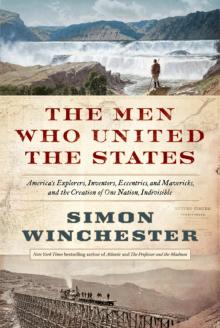 The Men Who United the States: America's Explorers
The Men Who United the States: America's Explorers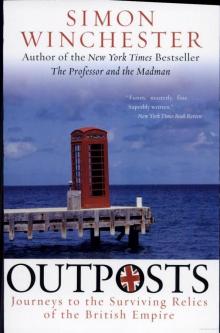 Outposts: Journeys to the Surviving Relics of the British Empire
Outposts: Journeys to the Surviving Relics of the British Empire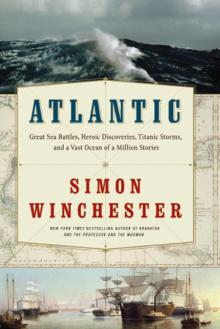 Atlantic: Great Sea Battles, Heroic Discoveries, Titanic Storms
Atlantic: Great Sea Battles, Heroic Discoveries, Titanic Storms The Professor and the Madman: A Tale of Murder, Insanity
The Professor and the Madman: A Tale of Murder, Insanity A Crack in the Edge of the World
A Crack in the Edge of the World The Perfectionists: How Precision Engineers Created the Modern World
The Perfectionists: How Precision Engineers Created the Modern World The Man Who Loved China: The Fantastic Story of the Eccentric Scientist
The Man Who Loved China: The Fantastic Story of the Eccentric Scientist The River at the Center of the World: A Journey Up the Yangtze
The River at the Center of the World: A Journey Up the Yangtze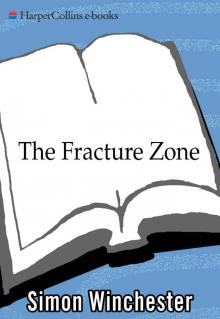 The Fracture Zone: My Return to the Balkans
The Fracture Zone: My Return to the Balkans The Map That Changed the World
The Map That Changed the World Krakatoa: The Day the World Exploded
Krakatoa: The Day the World Exploded The Man Who Loved China
The Man Who Loved China The River at the Centre of the World
The River at the Centre of the World Bomb, Book and Compass
Bomb, Book and Compass The Perfectionists
The Perfectionists The Meaning of Everything
The Meaning of Everything Exactly
Exactly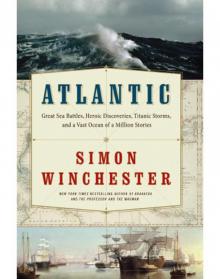 Atlantic
Atlantic Korea
Korea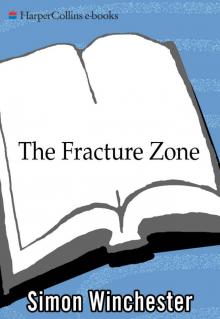 The Fracture Zone
The Fracture Zone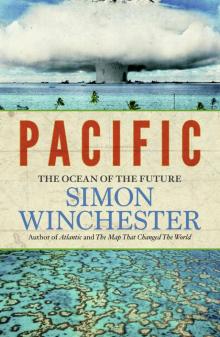 Pacific
Pacific Krakatoa
Krakatoa The Professor and the Madman
The Professor and the Madman Outposts
Outposts